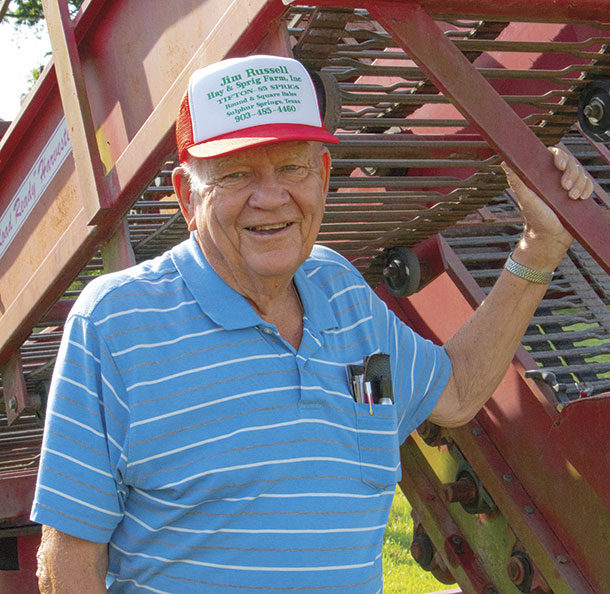Cultivation
“Good morning, this is Jim (pause). What kind of hay do you need?” As Jim Russell answers his phone, he cultivates customers as carefully as he cultivates fields.
In June 2018, Jim Russell was only able to get 641 bales of hay on the first cutting of Tifton 44 and Tifton 85 bermudagrass fields due to lack of water, and it was sold before it left the field. At that time, Russell’s hay barns were nearly empty, housing only a few square bales from the previous year.
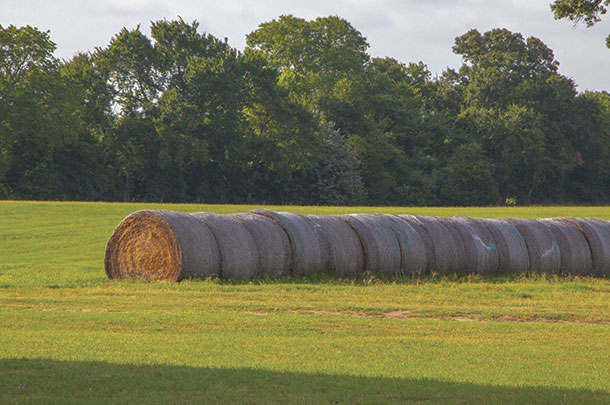
Near the barns, about 50 round bales sat – also last year’s hay. As Russell hung up the call with the customer, he said, “I’m getting probably 50 calls a day right now. Hay will be really scarce before the year’s out.”
Russell Hay & Sprig Farm Inc. is located on 1,000 acres near Sulphur Springs, Texas, and grows Tifton 85 and Tifton 44 bermudagrass hay. Even though the area reports a 41-inch average rainfall, Russell says, “There’s a drought somewhere in Texas every year.”
Russell remembers the 2011-12 drought and says during that time, he brought in hay from 14 different states trying to meet customer demand; much of that hay came out of Wyoming and Montana. And he wonders if he’ll have to find hay again to fill this year’s need.
In a normal year, Russell could get three to four cuttings (maybe even five if he’s lucky) and tie 100 square 60-pound bales per acre per cut with Tifton 85. Tifton 44 would normally get three to four cuttings and produce 50 to 60 square 60-pound bales per acre per cutting. Not this year.
While Tifton 85 usually yields about 3 tons to the acre per cutting, Russell says in a dry year like this one, he’ll be lucky to get half a ton per acre per cutting on two or three cuts throughout the 2018 season unless it gets moisture.
Diversification
Fortunately, Russell has diversified by cutting and marketing bermudagrass sprigs. Order taking for sprigs usually starts in September. On the following March 1 (in a good year), Russell starts digging sprigs with an eye toward cutting 100,000 bushels for market. Russell says, “You can dig sprigs every year if you take care of it, but we’d rather cut a field every other year. Sometimes we have to cut every year to meet supply.”
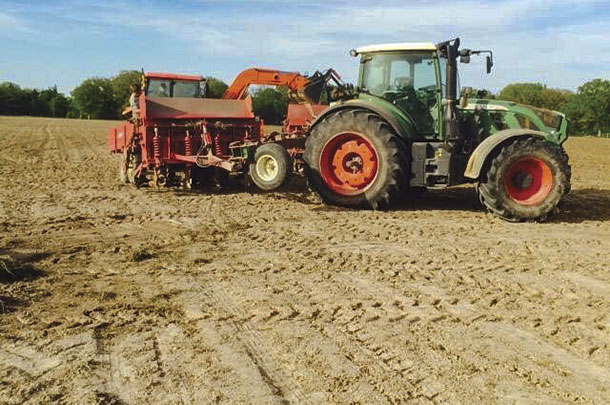
Grass sprigs are cut below the surface with 60-inch diggers, leaving about 4 to 6 inches of roots attached. As the cut sod rolls up a chain conveyor, the sandy soil falls from the roots. Sprigs are then loaded into dump trailers, which transport the sprigs to a tilled field prepared for planting.
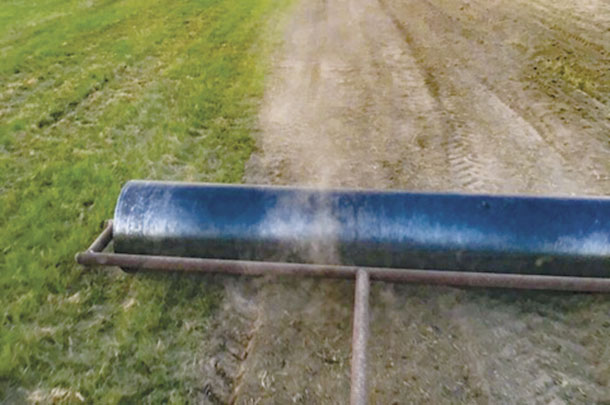
From the dump trailer, they are loaded into a sprig planter, equipped with a furrow opener, closing wheel and packing wheel. Planting at a 1- to 3-inch depth is key, Russell says, as the sprigs have to be planted into soil that contains adequate moisture for establishment. The planting rate is usually between 35 and 40 bushels per acre.
Back at the sprig source field, the land is rolled within 24 hours to pack the soil around loose roots and keep them moist. Sprigging cuts back one and one-half cuttings for hay on the source field in the sprigging year, but the stand re-establishes quickly from the deeper root profile.
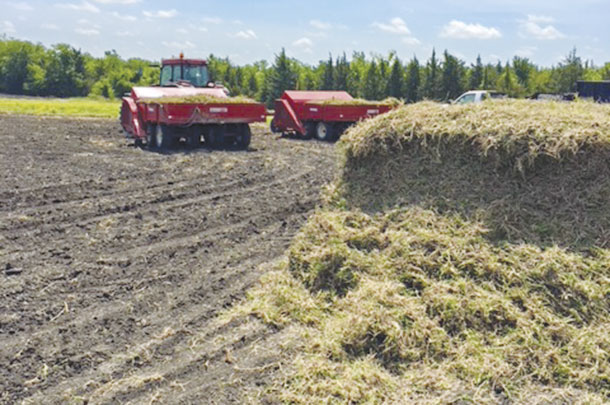
Russell sells some sprigs straight from the field, but his son John also custom plants sprigs for customers requiring that service. Russell started sprigging for his own fields in 1980. In 1993, he planted Tifton 85 and started selling Tifton 85 sprigs in 1996. He says the custom planting side of the business has its frustrations, as all businesses do.
“Folks will say they have 20 acres to sprig, so we cut 20 acres worth and, when we show up, we’ll find it’s more like 17 acres or maybe 23 acres,” Russell says. “So we’ve either overprepared or underprepared – either one is frustrating. The GPS has been especially helpful in that regard.”
Cooperation
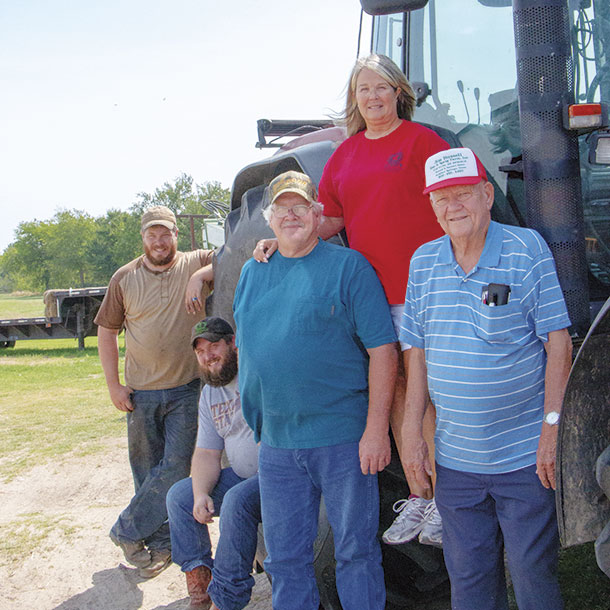
Now this is where it gets complicated: John (Jim’s son) works full-time for Jim but owns trucks to use in the silage harvest.
John’s sons, Josh and Jarrett, have a custom operating business (Russell Custom Farming in Brashear, Texas), and they run the hay mowers, round balers and large square balers for Jim’s crop (and others), and also own three choppers for the silage harvest season, which John’s trucks haul for dairies in the county. In addition, the brothers haul manure.
Did you follow that? It reminds me of a three-ply rope twist. If you untwist the rope, each of the three strands becomes weaker by themselves, but together they have a complementary relationship and strengthen the whole.
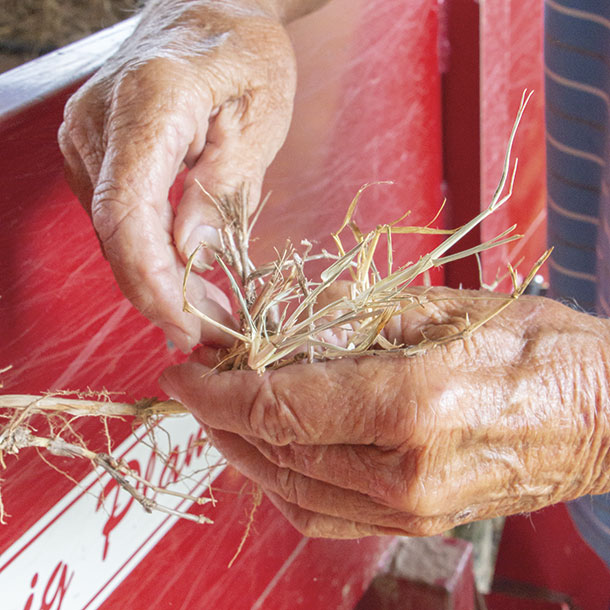
That’s how the Russell family relationships work. And any one of them might be required to run a mower, a baler, a chopper, a planter, a digger or drive a truck. “Whatever needs doing that day, we’ll help each other,” Josh says.
Even with the help from John (when he’s not busy working for Jim), Josh and Jarrett have relied on the H2A program for the past five years to bring in labor from Mexico for the busy summer season. Many dairymen in Hopkins County plant triticale in the fall, have it chopped in the spring and then follow it with corn silage. The extra labor is absolutely essential to running trucks and equipment.
The challenges this season for all three businesses have included heat, drought and pests. On July 20, 2018, when I visited with Josh, it was 105ºF and was expected to get to 110ºF through the weekend and had been dry since early spring. They only began their second cutting of hay in late July, when they would normally have been on the third cutting.
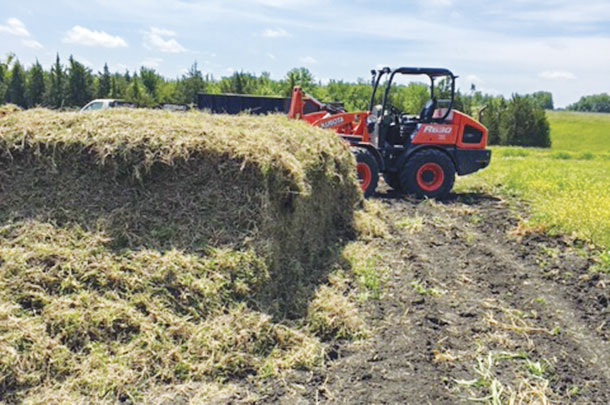
So they’ve only been able to custom mow and bale about 40 percent of the business they would have normally acquired. Additionally, they had to spray for armyworms to keep ahead of the damage. Yet, committed to improving their operation and making it more efficient, John headed to Illinois to pick up a Bale Band-It to help with bale handling.
There are always challenges. However, customer cultivation, diversification and cooperation – the Texas three-twist – creates a stronger business model than any one by itself. ![]()
PHOTO 1: Jim Russell of Russell Hay & Sprig Farm Inc. in Sulphur Springs, Texas, stands next to a sprig harvester.
PHOTO 2: A few leftover hay bales from the 2017 season are staged in bermudagrass fields near the home place.
PHOTO 3: Although, if properly cared for, a bermudagrass field can be cut for sprigs every year, Russell prefers cutting a field every other year to maintain better production.
PHOTO 4: After a field is harvested for sprigs, a roller packs the loose soil around the remaining roots for re-establishment.
PHOTO 5: A stack of harvested bermudagrass sprigs await transport.
PHOTO 6: Jarrett, Joshua, John, Christie and Jim Russell run separate but complementary businesses.
PHOTO 7: Jim Russell holds a single bermudagrass sprig.
PHOTO 8: Once cut, the sprigs are staged for loading onto trucks to haul them to buyers’ fields. Photos by Josh Russell and Lynn Jaynes.

-
Lynn Jaynes
- Editor
- Progressive Dairyman
- Email Lynn Jaynes
